
Small Form Factor Pluggable (SFP) Modules: Definition, Types, Applications, and Market Trends
Global electronic component supplier ERSAELECTRONICS: Rich inventory for one-stop shopping. Inquire easily, and receive fast, customized solutions and quotes.
Answer first: An SFP (Small Form Factor Pluggable) module is a hot-pluggable network transceiver that lets switches, routers, and servers link to fiber or copper and communicate reliably at 1G/10G/25G and beyond. It matters because SFP provides a scalable, swappable physical interface for modern data-center and telecom networks.

On this page you’ll quickly learn:
-
What an SFP module is & how it works (SFP port, hot-swap, supported standards).
-
Types & differences: SFP, SFP+ (10G), QSFP/OSFP (40/100/400G), GPON/EPON.
-
Where it’s used: data centers, carrier networks, enterprise IT, industrial Ethernet.
-
Inside the module: the ICs that power SFP—SerDes/PHY, laser driver, TIA, power management, EEPROM.
-
How to choose & future trends: speed/distance/wavelength/compatibility, plus CPO and higher-speed roadmaps.
By the end, you’ll know what SFP is, how to select it, where to deploy it, which chips sit inside, and where the technology is going next—so you can move from concept to BOM with confidence.
What is a Small Form Factor Pluggable (SFP) Module?
SFP (Small Form Factor Pluggable) is a hot-swappable network transceiver that plugs into a device’s SFP port (receptacle/cage) and connects to fiber optic or copper cabling. In plain terms—this is the sfp definition: an SFP module enables standards-based links (e.g., Ethernet/Fibre Channel) at multiple speeds (1G/10G/25G+) while letting you choose the physical media you need.
- Hot-pluggable: insert or replace without shutting the switch/router/server down.
- Media-agnostic: one hardware port, many media options—fiber (SX/LX, etc.) or copper.
- Multi-rate: supports 1G/10G/25G and higher families via SFP/SFP+/QSFP/OSFP.
Why is it called “Small Form Factor”?
“Small form factor” reflects a compact electro-mechanical specification that replaced larger early modules (like GBIC). The smaller housing increases port density, lowers power and cost per port, and simplifies field maintenance—you swap the module, not the whole line card.
What is an SFP port?
An SFP port is the front-panel receptacle (metal cage + connector) on a switch, router, or server that accepts an SFP module. The port provides the electrical/management interface (ID, diagnostics), while the pluggable module determines the media type and reach (fiber vs. copper, distance, wavelength). In short: the port ≠ module.

Next: Types of SFP modules (SFP / SFP+ / QSFP / OSFP / GPON) and where each type is used.
How Does an SFP Module Work?
An SFP module works by plugging into the device’s SFP port (front-panel receptacle/cage), drawing power and high-speed differential lanes from the host, and performing the required electrical-to-optical (or electrical-to-electrical for copper) conversion. Over a low-speed management interface, the host reads the module’s ID/capabilities and monitors diagnostics (DOM/DDM) before bringing the link up.
SFP Port ↔ Host Relationship
The SFP port is the physical slot on a switch/router/server that mates with the module. It provides 3.3 V power, TX/RX high-speed pairs to the host PHY/SerDes, and a management channel for module identification and health telemetry. The port is the slot; the module determines media type, reach, wavelength, and speed family.
Why Hot-Swappable Matters
- Replace or upgrade modules without downtime—no need to power off the chassis.
- Faster field service and flexible capacity (mix fiber and copper as needed).
- Reduced operational risk—swap a module, not an entire line card.
- Mechanical latch and staged pin contacts help ensure safe insertion/removal.
Protocols an SFP Can Support
- Ethernet — 1 GbE (1000BASE-SX/LX), 10 GbE (SFP+), 25 GbE (SFP28) and related families.
- Fibre Channel — storage networking interconnects.
- SONET/SDH — carrier transport systems.
Specific protocols and reaches depend on the exact SFP model you plug in—choose by speed, distance, and wavelength.

Next: Types of SFP modules and the ICs inside an SFP module.
Different Types of SFP Modules
SFP-family modules evolve by speed, lane count, and media: from SFP (1G) to SFP+ (10G), then multi-lane QSFP/OSFP (40G/100G/400G). Access networks commonly use GPON/EPON SFP. When selecting, consider speed, distance, wavelength, fiber type or copper, temperature grade, and vendor compatibility.
Standard SFP (1G)

The 1G SFP covers mainstream Gigabit Ethernet optics. 1000BASE-SX uses multimode fiber at 850 nm for short reaches (≈220–550 m), while 1000BASE-LX uses single-mode at 1310 nm for typical 5–10 km. It fits enterprise access/aggregation, campus backhaul, industrial Ethernet, and video surveillance uplinks. For search clarity: many users look for a 1000base sx gigabit ethernet optic module when sourcing the SX variant.
- Media: MMF (SX), SMF (LX); LC connector is common.
- Typical reach: SX ≈ 220–550 m; LX ≈ 5–10 km (vendor specific).
- Use cases: enterprise access, campus, industrial, security backhaul.
SFP+ (10G)

SFP+ is the dominant 10 Gigabit pluggable in modern networks—same compact envelope with upgraded signal integrity. Common optics include SR (850 nm/MMF ≈300 m), LR (1310 nm/SMF ≈10 km), ER (≈40 km), and vendor-extended ZR (≈80 km). For short top-of-rack links, DAC (passive/active copper) and AOC (active optical cable) simplify deployment. In procurement queries you’ll see “10 gigabit small form factor pluggable module” used to describe the SFP+ class.
- Data center roles: ToR/Leaf–Spine aggregation, storage and virtualization interconnect.
- Cable forms: DAC for very short/low-cost links; AOC for simple mid-reach connectivity.
- Optic choices: SR/LR/ER/ZR depending on distance and fiber type.
QSFP / OSFP (40G / 100G / 400G)

For HPC and hyperscale data centers, multi-lane modules deliver higher throughput. QSFP families (QSFP+/QSFP28/QSFP-DD) aggregate 4 or 8 lanes (e.g., 4×10G, 4×25G, 8×50G) and support breakouts to 4×10G/25G. OSFP targets 400G/800G with more thermal headroom; it is not mechanically compatible with QSFP. In short comparisons—sfp vs qsfp vs osfp—key differences are lane count/speed, power & cooling, physical size/compatibility, and typical deployment layer.
- Targets: high-density spine/core, AI/ML fabrics, inter-DC links.
- Breakouts: QSFP can fan-out to multiple lower-rate ports for flexible topology.
- Thermals: OSFP offers larger thermal envelope for very high speeds.
GPON / EPON SFP

In FTTH and access networks, GPON/EPON SFPs integrate optics aligned to ITU-T (GPON) or IEEE (EPON) standards. They may be used in OLT slots or as SFP-ONT forms. Planning focuses on launch power, receiver sensitivity, optical budget, and optics class (e.g., B+/C+). Some vendors offer higher-density options—often referenced in searches as a dual gpon small form factor pluggable optical module.
- Use cases: telco access, campus/MDU aggregation, surveillance backhaul.
- Wavelength plans: distinct downstream/upstream wavelengths per standard.
- Considerations: optical class, split ratio, distance, and ONU/OLT compatibility.
Next: Where each type is used (Applications) and Inside the module: the ICs that power SFP.
Applications of SFP Modules
SFP-family transceivers span access, aggregation, and core layers across multiple industries. Below are the four most common deployment arenas and how SFP/SFP+/QSFP/OSFP or GPON/EPON variants map to real networks.
Data Centers (Servers & Switch Interconnects)

In modern leaf–spine fabrics, SFP/SFP+ (1G/10G) and SFP28 (25G) dominate server-to-ToR and ToR-to-Leaf links, while QSFP/OSFP handle spine/core tiers. Short in-rack connections favor DAC/AOC for simplicity and power efficiency; building-wide links use SR/LR optics. Hot-swappability, port density, and broad compatibility make SFP-family modules a data-center staple for rapid scale-out and hardware lifecycle agility.
- Speeds/media: 1G/10G/25G via SFP/SFP+/SFP28; DAC/AOC (short), SR/LR optics (room/building).
- Roles: server ↔ ToR, ToR ↔ Leaf, Leaf ↔ Spine.
- Priorities: density, power, hot-swap maintainability, ecosystem support.
Telecom (Optical Backbone & Carrier Networks)

Carriers use SFP+ 10G and SFP28 25G across access, aggregation, and metro backbones. Long-haul variants—LR/ER/ZR—extend reach from ~10 km to ~80 km (vendor-dependent). SONET/SDH and Ethernet services coexist, while 5G fronthaul/midhaul/backhaul raise density and timing requirements. CWDM/DWDM optics introduce colored wavelengths for metro and backbone capacity.
- Distances: ~10/40/80 km via LR/ER/ZR classes.
- Standards: Ethernet and SONET/SDH; 5G transport domains.
- Optical plans: 1310/1550 nm, CWDM/DWDM options for capacity/compatibility.
Enterprise Networks (LAN/WAN)

Campuses and buildings rely on 1G SFP (1000BASE-SX/LX) and 10G SFP+ for uplinks between IDFs and MDFs, as well as inter-building fiber runs. RJ45 SFP modules assist copper-based migrations. Surveillance, access control, and wireless backhaul often aggregate through SFP uplinks to keep wiring simple and distances flexible.
- Speeds/media: 1G/10G, MMF/SMF; RJ45 SFP for copper re-use.
- Use cases: campus backhaul, building interconnects, IDF ↔ MDF.
- Priorities: cost, ease of deployment, compatibility with existing gear.
Industrial Automation (Industrial-grade SFP)

Industrial networks demand wide-temperature operation (e.g., −40~85 °C), EMI robustness, vibration tolerance, and long service life. SFP optics here tend toward single-mode long-reach connections, redundant rings, and hardened housings for utilities, rail, oil & gas, and smart factories. Selecting industrial-grade SFPs reduces downtime in harsh environments and simplifies lifecycle maintenance.
- Features: wide-temperature, EMI/ESD resilience, shock/vibe endurance.
- Topologies: single-mode long reach, ring/mesh redundancy.
- Sectors: power & utilities, rail, oil & gas, manufacturing.
Next: Inside an SFP: the ICs that power the module or How to select the right SFP for your network.
Inside an SFP Module: Key IC Components
Inside an SFP, the transmit/receive chain is driven by dedicated ICs: PHY, SerDes/CDR, Laser Driver and TIA, supported by clean Power ICs and an EEPROM for identification and diagnostics (DOM/DDM). These parts determine link stability (BER, jitter), optical sensitivity, and power/thermal behavior.

PHY IC
The PHY IC implements physical-layer functions (PCS/PMD) for Ethernet or Fibre Channel, handling link training and basic error control. It interfaces upstream to MAC/switch silicon and downstream to high-speed lanes feeding the module.
- Interfaces: SGMII/USXGMII, XFI, MDIO control.
- Key factors: supported speeds (1/10/25G…), BER, jitter tolerance, clock quality, power.
- Selection tip: match host SerDes and clocking plan; budget for temperature and power headroom.
SerDes (with CDR)
The SerDes performs parallel-to-serial and serial-to-parallel conversion and includes CDR (Clock & Data Recovery) to restore eye opening and suppress jitter. It is the signal-integrity hub between host lanes and the optical front-end.
- Data rates: 10/25/50/100G per lane families (implementation dependent).
- Equalization: FFE/DFE and channel compensation for backplane/cable loss.
- CDR quality: jitter cleaning and tolerance directly affect BER and FEC load.
- Selection tip: align SerDes bandwidth/EQ with Laser Driver/TIA capabilities.
Laser Driver + TIA
On the transmit path, the Laser Driver biases and modulates the light source (VCSEL/DFB). On receive, the TIA (Transimpedance Amplifier) converts photodiode current to voltage with low noise and adequate bandwidth.
- Laser Driver: modulation/bias ranges, rise/fall time, extinction ratio, temperature compensation.
- TIA: transimpedance gain, input-referred noise, bandwidth, AGC behavior.
- Optics linkage: wavelength (850/1310/1550 nm), optical power, link budget, DDM sensors.
- Risk: over/under-drive or TIA saturation elevates BER; verify sensitivity targets across temperature.
Power IC
Power Management ICs generate multiple rails (e.g., 3.3 V to 1.8/1.2 V) and enforce start-up/shutdown sequencing with low ripple and noise to protect sensitive SerDes/TIA circuitry.
- Metrics: ripple/noise, PSRR, transient response, efficiency, thermal design.
- Sequencing: soft-start and protection avoid CDR unlock or spurious resets.
- Selection tip: noise-critical rails favor LDO; high-current rails use DC-DC + post-LDO.
EEPROM (I²C, ID & Diagnostics)
The module EEPROM exposes identity and capability data and provides DOM/DDM telemetry (voltage, temperature, TX/RX optical power) over I²C, enabling host compatibility checks and alarms.
- Content: vendor/model, wavelength, distance, supported speeds, threshold alarms.
- Interoperability: factory programming/calibration must match host databases.
- Risk: inconsistent data or thresholds can trigger errors or rate-limits on the host.
In practice, PHY + SerDes/CDR dictate electrical integrity and jitter, Laser Driver + TIA set optical power and sensitivity, while Power ICs and EEPROM keep the module stable and interoperable. Next: How to select the right SFP (speed, distance, wavelength, temperature) or FAQ.
Vendor Landscape & Popular Models
The SFP ecosystem is driven by data center, telecom, enterprise, and industrial demand. Vendors range from full-stack network platforms to optical specialists and industrial Ethernet providers. If you’re sourcing cisco small form factor pluggable sfp transceiver modules or cross-vendor alternatives, pay close attention to coding/compatibility, optics class, distance, and operating temperature.

Cisco
Cisco offers broad SFP families aligned to its switching/routing portfolio, with strict coding and DOM behavior for platform integrity across enterprise, data center, and carrier networks.
- Speeds: 1G/10G/25G/40G/100G families (SFP/SFP+/SFP28/QSFP).
- Optics: SX/LX/LR/ER/ZR plus CWDM/DWDM; copper RJ45 SFP options.
- Strengths: ecosystem fit, extensive QA, lifecycle support.
- Tip: match module coding to device/OS version to avoid alarms or rate-limit.
Popular types/examples: 1G SX/LX, 10G SR/LR/ER, SFP-10G-T (RJ45), QSFP breakouts for 4×10G/25G.
Finisar (Coherent)
Originating as an optics specialist, Finisar (now under Coherent branding for many lines) supplies high-performance datacom/telecom modules with strong optical engineering and broad portfolio depth.
- Speeds: 1G/10G/25G/100G/400G families.
- Optics: SR/LR/ER variants, AOC for simplified short/mid-reach cabling.
- Strengths: optical performance, yield, and availability across generations.
- Tip: verify host interoperability lists and DOM thresholds per platform.
Popular types/examples: 1G SX/LX, 10G SR/LR, SFP28 25G SR/LR, QSFP28 100G SR4/LR4.
Intel
Intel modules are widely paired with Intel NICs in servers, making them common in access/aggregation layers of data centers and enterprise networks.
- Speeds: 1G/10G SFP/SFP+, 25G SFP28.
- Use: short/mid-reach datacenter links, NIC-to-switch connectivity.
- Strengths: clean fit with Intel NIC firmware/driver expectations.
- Tip: match module type to NIC model and firmware for best stability.
Popular types/examples: 1G SX/LX, 10G SR/LR, SFP28 25G SR/LR.
MOXA
MOXA focuses on industrial Ethernet—utilities, rail, oil & gas, factory networks—with ruggedized SFP/SFP+ designed for harsh environments.
- Speeds: 1G/10G industrial SFP/SFP+.
- Features: wide-temperature (e.g., −40~85 °C), EMI/ESD robustness, vibration tolerance.
- Strengths: reliability and longevity for mission-critical sites.
- Tip: confirm environmental ratings and fiber reach for site conditions.
Popular types/examples: 1G LX long-reach, 10G LR, industrial-grade variants and housings.
Huawei
Huawei covers carrier and large enterprise scenarios end-to-end, including metro/backbone Ethernet and PON access modules aligned to its platforms.
- Speeds: 1G/10G/25G/40G/100G families; GPON/EPON/10G-PON.
- Strengths: telecom features, management integration, large-scale deployment.
- Tip: match module coding/firmware and regional compliance to target chassis/OS.
Popular types/examples: 10G LR/ER/ZR long-reach, CWDM/DWDM optics, GPON/EPON SFP forms.
Juniper
Juniper modules complement its QFX/MX/EX lines in data center and service provider networks, balancing performance, telemetry, and validated interop.
- Speeds: 1G/10G/25G/100G families.
- Optics: SR/LR/ER/ZR; DAC/AOC for short/quick wiring.
- Tip: check compatibility lists and DOM thresholds for specific platforms.
Popular types/examples: 1G SX/LX, 10G SR/LR, QSFP28 100G SR4/LR4, DAC/AOC patching.
- Original-coded vs third-party compatible: prioritize platform stability and DOM behavior.
- Commercial vs industrial grade: temperature, EMI/ESD, vibration, housing.
- Data center (short-reach DAC/AOC, SR) vs telecom (long-reach LR/ER/ZR, CWDM/DWDM).
Not sure which module fits your chassis and distance budget? Submit your BOM with speed, distance, wavelength, temperature, and vendor preference, and we’ll map compatible options across brands.
Future Trends
SFP-family pluggables will coexist with higher-lane, higher-rate form factors as networks scale. The roadmap combines faster per-lane signaling, more lanes per module, and tighter electro-optical integration to overcome front-panel density and signal-integrity limits.

Speed & Lane Roadmap (1G → 10G → 25G → 100G → 400G/800G)
Throughput increases via per-lane speed and lane aggregation. Edge/access retains 1G/10G/25G (SFP/SFP+/SFP28), while fabrics climb to 100G/400G and beyond with QSFP-DD and OSFP, shifting from 25G NRZ to 50G/100G PAM4 per lane. At 800G/1.6T, electrical reaches shorten, demanding stronger equalization and retimers.
- SFP/SFP+/SFP28 persist at the edge; QSFP/OSFP dominate spine/core growth.
- Per-lane transitions: 25G NRZ → 50G/100G PAM4 raise bandwidth but tighten SI/BER budgets.
- Shorter electrical links, more retiming/equalization, tighter cable and PCB constraints.
- Front-panel density and cooling become first-order design limits.
Co-packaged Optics (CPO)
Co-packaged optics (CPO) places optical engines adjacent to—or within—the switch ASIC package to slash high-loss board routes. As per-lane rates approach 100G PAM4, traditional copper traces between ASIC and front panel become impractically short or power-hungry. CPO promises lower power, higher density, and improved signal integrity, but raises challenges in serviceability, thermal management, and supply integration.
- Pros: reduced insertion loss, lower system power, higher front-panel capacity.
- Cons: harder field replacement, complex cooling, evolving manufacturing ecosystem.
- Bridging step: Linear Pluggable Optics (LPO) lowers DSP power to extend pluggable viability.
Smaller & Faster: Balancing Density, Power, and Thermals
Future front panels juggle density, thermal envelope, and W/Gb. SFP/SFP+ remain viable at the edge; at higher tiers, QSFP-DD, OSFP, and larger heat-sink options (or directed airflow/liquid cooling) expand limits. Short-reach interconnects favor DAC/AEC and AOC; longer links keep relying on optics. Industrial/telecom nodes may adopt steadier speeds to prioritize reliability and temperature margins.
- Form factors evolve for cooling headroom (heatsinks, airflow guides, liquid options).
- Cabling mix shifts: DAC/AEC for racks/rows; AOC and fiber for room/campus/metro.
- Edge and industrial deployments value longevity and wide-temperature grades.
In short, higher per-lane rates and shorter feasible electrical reaches are pushing designs toward stronger retiming, improved cooling, and tighter electro-optical integration—from pluggables to CPO. For practical guidance, continue to Selection Guide or Submit your BOM.
Frequently Asked Questions
Quick answers to the most common questions about SFP modules. Each item starts with the conclusion, then adds brief context. For deeper dives, follow the in-page links.
What does an SFP module do?
An SFP is a hot-swappable transceiver that connects a device’s SFP port to fiber or copper, enabling standards-based Ethernet/Fibre Channel links at 1G/10G/25G+. It lets you choose media and reach without replacing the switch/router. Learn more.
Can SFP be hot-swapped?
Yes. SFPs are hot-swappable: you can insert or replace modules without powering down. Follow vendor procedures—unlock latch, straight pull, protect the cage from dust—to avoid link flaps or alarms. How it works.
What is the difference between SFP and QSFP?
SFP family carries single-lane speeds (1G/10G/25G), while QSFP aggregates multiple lanes (4×10G/25G, 8×50G) to reach 40G/100G/400G. QSFP consumes more power but offers higher density; it’s used in spine/core and AI fabrics. Types overview.
What is SFP and types of SFP?
SFP is a compact pluggable transceiver. Common types include SFP (1G), SFP+ (10G), SFP28 (25G), and access variants like GPON/EPON SFP. For higher rates, see QSFP/OSFP. See all types.
Is SFP fiber or copper?
Both. Optical SFPs use fiber (SX/LX/LR/ER/ZR), while RJ45 SFP adapts to copper Ethernet. Short links may use DAC/AOC cable assemblies in the same SFP+ form factor. Types · Applications.
Is SFP electrical or optical?
SFPs can be optical (electrical↔optical conversion) or electrical (RJ45 copper, DAC). The host still provides electrical lanes; the module determines whether the external medium is fiber or copper. How it works.
Are SFPs plug and play?
Generally yes—insert the right optic/cable and the link comes up. However, coding/compatibility and DOM thresholds matter; mismatches may trigger alarms or rate-limits on some platforms. Vendor notes.
Is an SFP module active or passive?
Optical SFPs are active (contain laser drivers, TIAs, CDR/SerDes). Copper cables vary: DAC can be passive or active; AOC is active. Choose based on reach, power, and cost. Inside the ICs.
What is the maximum speed of SFP?
Nominally, SFP = 1G, SFP+ = 10G, and SFP28 = 25G. Higher rates move to QSFP/OSFP families. Always verify device support and module coding. Types.
What is the maximum distance for an SFP module?
Typical ranges: SX ≈ 220–550 m (MMF), LX/LR ≈ 10 km (SMF), ER ≈ 40 km, ZR ≈ 80 km (vendor-dependent). CWDM/DWDM can extend reach and add wavelengths. Distance options.
Can I plug an SFP into Ethernet?
Yes, if your device has an SFP port. For copper Ethernet, use an RJ45 SFP; for fiber, use the appropriate optic and LC patch cord. SFP cannot be inserted into a fixed RJ45 jack. SFP port basics.
Can you convert SFP to RJ45?
Use an RJ45 SFP module or a standalone media converter. RJ45 SFPs are convenient for short copper runs; check speed (1G/10G), cable category, and device compatibility. Enterprise use cases.
What plugs into an SFP port?
Typically an SFP/SFP+ module. Externally, you connect an LC fiber patch cord, an RJ45 copper lead, or a DAC/AOC cable to that module. The port is the slot; the module defines the medium. How it works.
Where are SFPs used?
Across data centers, telecom, enterprise LAN/WAN, and industrial networks. They span access, aggregation, and core, matching distance and media needs per layer. See applications.
Will SFP replace RJ45?
No—they’re complementary. RJ45 remains ideal for short copper runs and ubiquitous client access; SFP provides modular optics/copper for switch uplinks and interconnects where distance, density, or flexibility matters. More context.
How do I plug in or unplug an SFP safely?
Align the module, insert straight until the latch clicks, then attach the LC/RJ45/DAC lead. To remove, release the latch and pull straight—avoid twisting. Use dust caps and observe ESD precautions. Devices can stay online because SFPs are hot-swappable. Procedure.
Call to Action
Send us your BOM for a cross-vendor compatibility map and an SFP internal IC solution you can build on (PHY / SerDes / Laser Driver / TIA / Power / EEPROM).
Submit Your BOM → Get a Compatibility Map
We’ll return a compatible SFP mapping across brands and a checked list for speed, distance, wavelength, temperature, and platform coding/DOM behavior.
- Cross-vendor alternatives & second-source options
- Speed / distance / wavelength sanity check
- Commercial vs. industrial temperature guidance
- Coding / DOM / compatibility notes
Include: target speed & form factor (SFP/SFP+/SFP28/QSFP/OSFP), distance & wavelength (SX/LX/LR/ER/ZR; 850/1310/1550 nm), fiber/copper & environment (MMF/SMF; DAC/AOC; commercial/industrial), device/chassis model, vendor preference, quantity & timeline.
Attach Excel/CSV/PDF, or paste your list in the email body.
Talk to an IC Engineer → Inside-the-Module Guidance
Get practical guidance on the internal signal chain: PHY / SerDes (CDR), Laser Driver / TIA, Power rails & sequencing, and EEPROM / DOM calibration and compatibility.
- Eye diagram / jitter / SI risk tips
- Optics pairing (VCSEL/DFB) & sensitivity targets
- Power ripple/PSRR & start-up sequencing checks
- EEPROM fields, DOM thresholds, host alarms
Prefer a call? Add your phone number and availability in the email—our engineer will schedule with you.
NDA available on request. Your data is used only for compatibility mapping and IC recommendations. No spam. Continue to the Selection Guide or review Vendor Compatibility Notes.
Related Articles
- ·Transistor Symbol: The Blockbuster Guide (With Zero Boring)
- ·ICD Electronics: Tiny Lightning, Relentless Reliability
- ·Smart Pill Dispensing Electronics: From Missed Doses to Mission Control
- ·Conditional Access Module (CAM): The Pay-TV Gatekeeper Engineers Actually Enjoy Reading About
- ·NC Formula Semiconductor: The Blockbuster Guide You Didn’t Know You Needed
- ·Electrosurgery Electronics: Turning RF Into a Surgical Superpower
- ·Endoscopic Imaging Electronics: Tiny Optics, Big Picture
- ·Instrument Cluster: The Dashboard Wizard That Makes You Feel Like Iron Man
- ·X-ray & CT Electronics: From Kilovolts to Reconstruction
- ·MRI Core Electronics: From Quench to K-Space







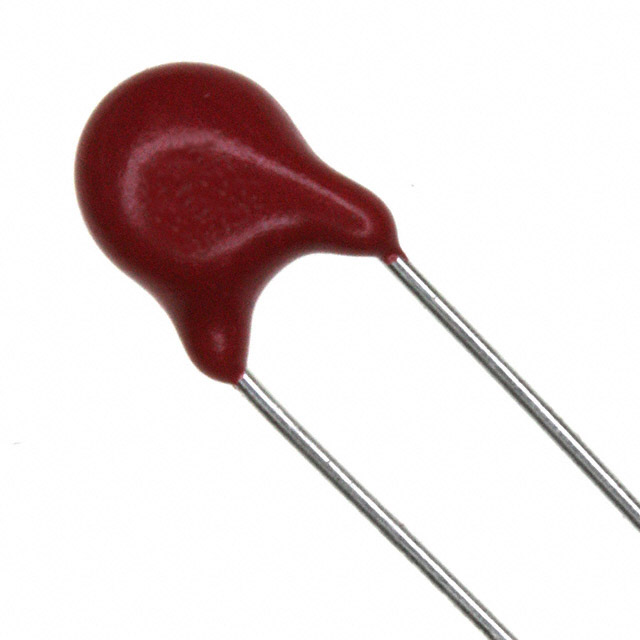
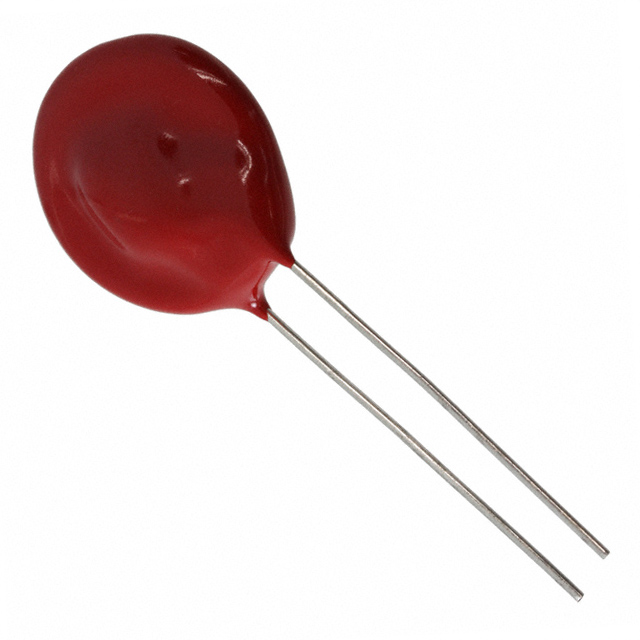

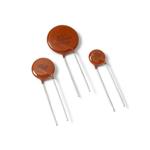
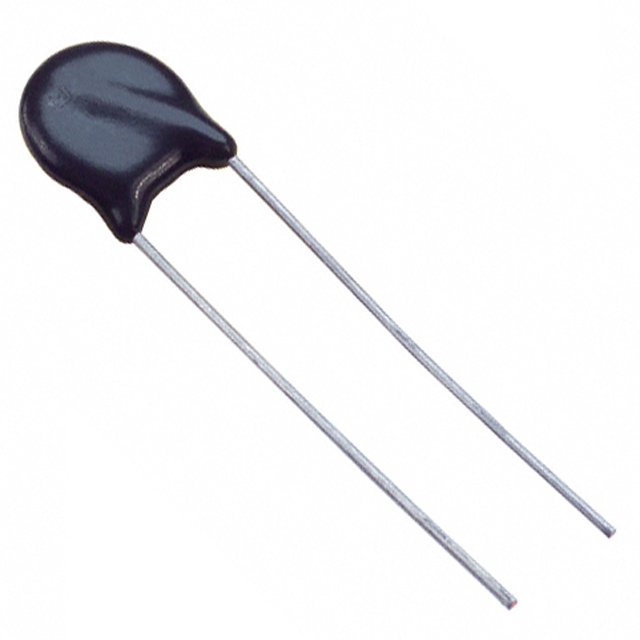
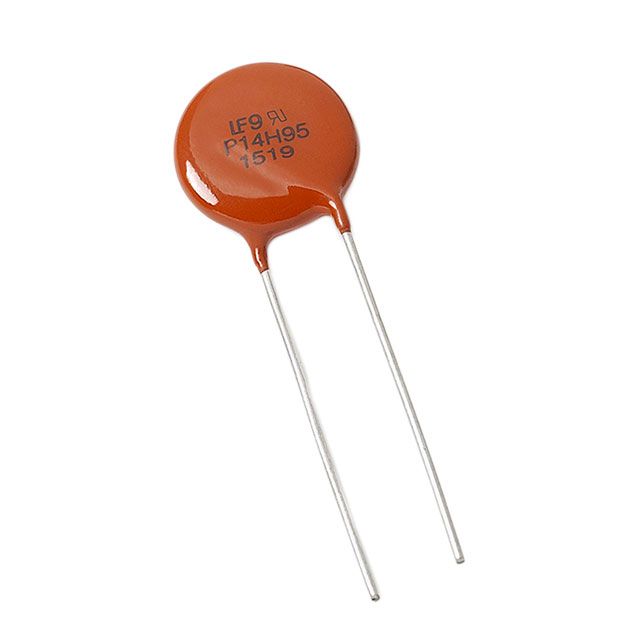







.png?x-oss-process=image/format,webp/resize,h_32)










